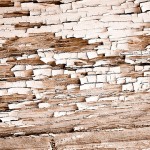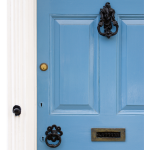 There are times when I think I’ve seen everything. I don’t know why I allow myself to think that. Because whenever I do–whenever that thought crosses my mind–whenever I’m tempted to think that I’ve seen everything . . . I find something like this.
There are times when I think I’ve seen everything. I don’t know why I allow myself to think that. Because whenever I do–whenever that thought crosses my mind–whenever I’m tempted to think that I’ve seen everything . . . I find something like this.
And not only have I never seen something like this–I’ve never even dreamed or imagined something like this. I mean really . . . who does? What kind of person dreams up the notion that a super idea would be a toilet paper holder/iPod dock and music system with waterproof speakers? Who thinks these things up?
I mean really . . . apart from the general “grossness” . . . isn’t there also a lack of aesthetics? And apart from those things . . . who looks at that thing and thinks it’s going to be extremely functional? Can’t you just imagine the deep bass tones and crystal clear sounds that will pump through those (I’m sure) high tech waterproof speakers? And think about the iPod dock part of it. It’s supposed to charge your iPod . . . but using what? I don’t think it’s probably hardwired into the wall. It probably runs off batteries. So you’re using regular double A batteries to charge your iPod. How do you think that’s going to work?
Yeah, I only have to look at it to pretty much guarantee you it’s not going to be a good iPod dock. It won’t be a very good sound system. It’s an ugly, over-complicated and soon to be gross (just look at all those buttons that will soon be coated with gunk) toilet paper holder.
It has three purposes: hold toilet paper, recharge iPods and play music. And, undoubtedly, it will do all three. But how well? Wouldn’t you be better off to just buy a regular toilet paper holder? One that is only designed to hold . . . you know . . . toilet paper? Wouldn’t that make more sense? Then, go ahead and buy another gadget to dock your iPod and play your music. Why try to combine all those things into one? When you do, you end up with a product that WILL do all the things promised–it just won’t do any of them well.
And that kind of reminds me of that new Primer and Paint all combined in one product. Oh, the analogy isn’t perfect–paint and primer in one product DOES work well on certain situations. But really, for many projects, using a primer that’s also a paint can be just as dumb as buying this toilet paper holder.
When you’re painting bare wood . . . inside or outside . . . skipping the primer step is as dumb as buying this toilet paper holder. When you’re painting over unknown stains that are on your walls–water spots, smoke stains, crayon, ink or marker stains . . . .painting over those stains without priming is as dumb as buying that toilet paper holder. Painting over tough-to-stick-to surfaces like plastics and laminates without using a primer is . . . .well, you get it.
There are certain times when the primer/paint all in one product (which is really just a high-quality latex paint) is fine. But there are other times when skipping that primer step is going to fill your home improvement life with misery. Knowing the difference between the two is the tough part. And that’s why we’re here.
Just stop out at RepcoLite and tell us what you’re doing. We’ll help you figure out what you should use, how you should do it and whether or not you should go with the black, white or chrome model of that toilet paper holder thingy.





 There’s nothing more important at the beginning of a relationship–whether it’s a personal relationship or a professional one–whether it’s a girl you’re meeting for the first time . . . or a potential employer your interviewing with, or even a resume your creating, or a job application you’re filling out–nothing’s more important at the start of any potential relationship than making a good first impression–you know, getting off on the right foot.
There’s nothing more important at the beginning of a relationship–whether it’s a personal relationship or a professional one–whether it’s a girl you’re meeting for the first time . . . or a potential employer your interviewing with, or even a resume your creating, or a job application you’re filling out–nothing’s more important at the start of any potential relationship than making a good first impression–you know, getting off on the right foot.


